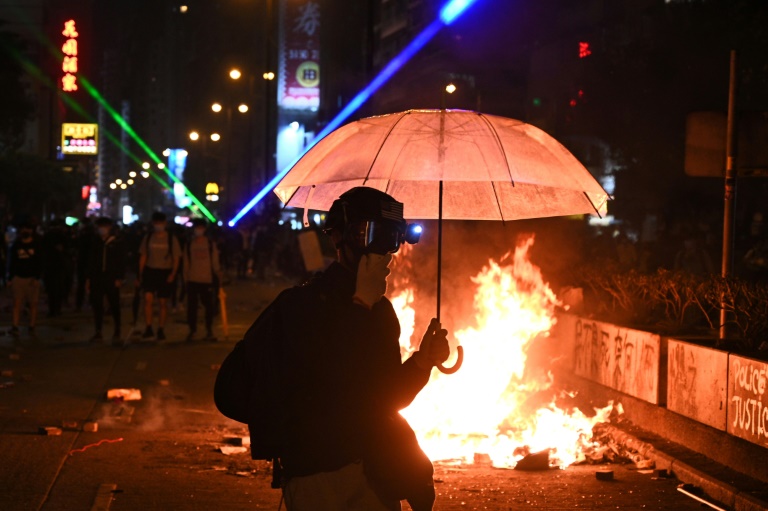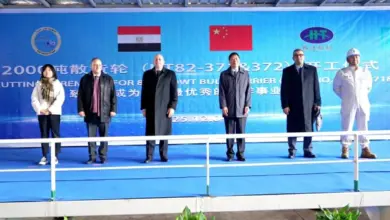
Murder disguised as suicide. A secret massacre at a subway station. Impending ‘terrorist’ attacks: false news online is amplifying fear and confusion in Hong Kong as months of pro-democracy unrest turns increasingly violent in the real world.
Using half-truths, carefully-edited video, and selective reporting, both the pro-democracy and pro-Beijing camps push their own protest narrative — and even fact checking doesn’t always help people understand what’s going on.
“I just assume everything is fake until I have seen sources from both sides and more than two news agencies I trust are reporting the same,” Hong Kong resident Michael Wu, 27, told AFP.
Opposing camps are locked in “echochambers” of misinformation online, said Wu, with genuine, neutral news sources were being drowned out online
“People on each camp only ‘fact check’ sources within their own echochamber,” Wu said. “Even when the truth is out, people are also ready to believe in whatever fake news that would advance their cause or ideology.”
Local fact checking Facebook page Kauyim Media, which has more than 140,000 followers and posts quick, real-time debunks of viral disinformation, said fake news was “amplifying the fear, hatred and confusion among Hong Kong residents”.
“The damage has been done and will take a long time to rectify,” Kauyim told AFP.
Disinformation affects Hong Kongers in real ways, said Masato Kajimoto, a fake news expert at the University of Hong Kong, pointing to a recent false press release on school cancellations.
The Education Bureau said the purported release was “entirely a fabrication” but Kajimoto said that even so, “this type of false information is confusing and has a direct impact on how people plan their daily lives”.
– Deep distrust –
A deep distrust of police and authorities may fuel the spread of rumors among protesters, with outlandish claims and conspiracies taking root, despite repeated official denials.
This is partly because, one protester told AFP, people see videos of police or suspected triads attacking protesters online but no disciplinary actions or prosecutions, further undermining trust. “Police are the law now,” they said.
In this febrile atmosphere, people seem more inclined to uncritically accept information they see that supports their viewpoint and “fake news passed on from person to person” can take on a life of its own.
“As violent action on both sides escalates and people become more galvanised in their beliefs… disinformation that confirms previous beliefs (is) widely shared,” Nathan Ruser, a researcher with the Australian Strategic Policy Institute’s International Cyber Policy Centre, told AFP.
When the naked body of a 15-year-old girl was pulled from Hong Kong harbor, it triggered a frenzy of online speculation that her death was connected to the protests — despite police ruling the death “not suspicious” and the girl’s mother saying it was suicide.
In November, the death of Chow Tsz-lok, a 22-year-old student, triggered a major escalation of protests as online rumors — including tweets from politicians — claimed Chow had been pushed from a car park by police, despite official denials that officers were in the area at the time.
Hong Kong’s new police commissioner said this week that fake news could “undermine the credibility of the police force”.
“We have to rebut those false accusation,” Chris Tang Ping-keung said.
– Curated violence –
On the other side, Chinese state media and troll armies running what Facebook and Twitter have called “organised disinformation campaigns” have used edited footage and carefully-curated images to highlight protester violence.
In one example fact checked by AFP, a video showing an old lady remonstrating with police was edited to make it appear that protesters threatened the woman. The misleading footage was shared on Weibo by the Communist Party Youth League.
“The editing was very convincing and that’s how harmful fake news is,” the Australia-based Chinese artist Badiucao told AFP.
Chinese-controlled platforms including major news channels on WeChat are dominated by fake news, he said, and “content is manipulated to paint a misleading picture about Hong Kong protesters”.
When protesters at Hong Kong Polytechnic University set a police vehicle ablaze this week, photographs purporting to show the badly-burned police officer at the wheel were circulating online within hours.
But the claims were false, an AFP fact check found. The photo of the badly-burned man was an old image from Malaysia.
“A lot of things that you receive you can’t tell if it’s real or fake,” one 60-year-old retiree told AFP, adding she was bombarded with protest news on social media and in chat groups.
“You can’t trust any one source right now… There’s too much (information) and it’s all jammed in your brain, this is not very good for your health.”
ec-ry-rb-ceb/je
Image: AFP/File / Philip FONG Hong Kong has been gripped by protests since June




